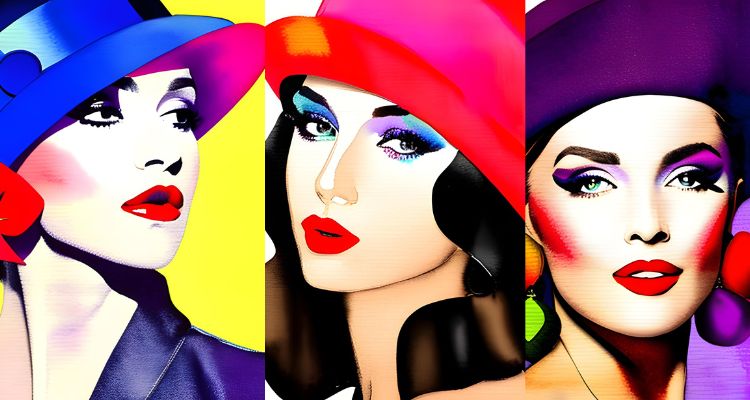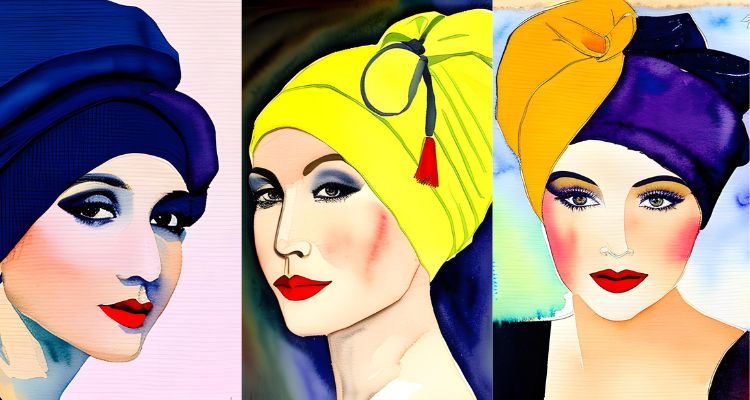The 1920s fashion hats were a legendary decade in fashion, famed for their daring and outlandish looks that defied convention. Particularly women started to adopt more masculine aesthetics, choosing shorter hairstyles and looser attire. Yet the hat was one item of clothing that both men and women often wore during the period. Every costume required a hat, which was also a means of expressing one’s particular style and individuality.
It was considered improper to leave the house without a hat at this period. There were a few hat designs that stood out as particularly distinctive among the various hat types that were fashionable throughout the 1920s. Women of various ages and socioeconomic groups wore the cloche hat, which came to be associated with the time. Although not traditionally considered a formal hat, the beret was a popular accessory for men and women. Turbans, boater hats, fedoras, and brimmed cloche hats were other well-liked options.
The classic hats of 1920s fashion will be examined in this article, along with the significance of each form. We’ll look at who wore these hats, how they were worn, and how they affected era-appropriate design. The significance of hats in 1920s fashion will be better understood after this article.

Cloche Hats
The cloche hat was among the most recognizable headwear of the 1920s fashion hats. The bell-shaped, tightly-fitting cloche hat was worn on top of the head. It was intended to hide the ears and frame the face by resting low on the forehead. Given the hat’s bell-shaped design, it seems sensible that the term “cloche” is derived from the French word for “bell.”
The cloche hat’s beginnings may be traced to the first decade of the 20th century when it was initially presented as a casual hat for sportswear. But, the cloche hat didn’t become well-known as a stylish accessory until the 1920s. It was well-liked by females of all ages and socioeconomic levels and eventually began to stand in for the newest fashion trends of the era.
Wool felt, and straw were just a few of the materials used to make cloche hats. The hats were decorated with ribbons, flowers, or feathers and came in a range of colors and patterns. Felt, which was used to make a soft, malleable hat that could be readily molded to suit the head, was one of the most popular materials for cloche hats.
Famous women who wore cloche hats in the 1920s fashion hats included designer Coco Chanel and actress Louise Brooks, who was famed for her black-and-white attire. The mushroom style, which had a broader brim, and the profile style were two variations of the cloche hat.
The cloche hat served as both a functional item and a stylish one. With the short hairstyles that were in style at the time, it was especially crucial that it maintained the wearer’s hair in place and protected it from the weather.
In general, the cloche hat was a key piece of 1920s fashion hats cloth. It was a symbol of the autonomous, free women of the day and the new, contemporary era. The cloche hat is still a well-liked item today and is frequently used as a statement piece to give modern ensembles a hint of retro flair.

Berets
The beret was another well-known headgear from the 1920s. The beret, though not often worn as a formal hat, rose in popularity during this time for both men and women. Wool felt, or other materials are used to create the soft, spherical, flat-crowned beret. It has a trendy and carefree appearance since it is frequently worn inclined to one side of the head.
The French Pyrenees region’s farmers and shepherds are thought to have introduced the beret to the world in the 14th century. Yet it wasn’t until the 1920s that the beret started to gain popularity. Artists and thinkers adored the beret because they considered it a representation of their individuality and bohemianism. It quickly became a famous fashion accessory, and well-known designers like Coco Chanel and Elsa Schiaparelli included it in their creations.
There are many other types of berets, but the French beret, which can be made of wool, felt, or leather, is the most well-known. The larger brim of the Basque beret, which comes from the Basque area of France and Spain, is usually constructed of wool or cotton. The wool military beret worn by troops during World War I is topped with a tiny patch made of leather or cloth.
The 1920s fashion hats are credited with bringing the beret into widespread use thanks to notable figures like Spanish painter and sculptor Pablo Picasso and French actress Josephine Baker. Josephine Baker was renowned for her daring and outlandish sense of style, and she frequently wore berets with eye-catching costumes. On the other hand, Pablo Picasso frequently wore his beret tilted to one side, giving him a casual and carefree appearance.
Berets were frequently worn with a range of clothes, including more formal clothing and informal clothing. They were well-liked by both sexes and regarded as functional accessories that could lend a dash of refinement to any ensemble.
In summary, the 1920s fashion hat beret was a key piece of 1920s clothing that was embraced by intellectuals, artists, and fashion designers because it typified the period’s free-spiritedness and bohemianism. The beret is still a common item and is frequently used as a statement piece to give contemporary ensembles a hint of European charm.
Turbans
Another fashionable headgear throughout the 1920s was the turban. A long piece of fabric is wrapped around the head in a certain way to create the turban, a headwrap. The Middle East and South Asia were the first places where turbans were worn by both sexes and in the early 20th century they were modified for Western fashion.
The turban sprang to popularity as a fashionable accessory in the 1920s fashion hats among ladies who wanted to give their clothing an exotic and glitzy feel. Turbans were frequently fashioned from pricey materials like silk, velvet, and satin and embellished with gems, pearls, and feathers.
The draped, coiled, and wrapped turbans were only a few of the several forms of headwear that were fashionable in the 1920s. A long piece of cloth was draped over the head and let to fall in gentle folds around the neck to create the draped turban. The cloth was twisted and spiral-wrapped around the head to produce the twisted turban. The wrapped turban included firmly wrapping the material around the head to provide a tidy and refined appearance.
The Duchess of Windsor, Gloria Swanson, and Wallis Simpson were notable women who wore turbans in the 1920s. Both ladies had a reputation for having great taste in clothing and frequently donned turbans to add flair.
Turbans were viewed as an exotic and opulent ornament that brought a touch of refinement to any ensemble and were frequently worn with evening dresses or formal clothes. They offered a chic method to cover the head and shield the hair from the weather, which made them popular among ladies with short hairstyles as well.

Other Iconic Hats
The 1920s fashion hats saw the popularity of several other classic hats in addition to the cloche, beret, and turban. These hats provided diversity and flair to the era’s fashion, and people frequently wore them to go with particular ensembles or situations.
The Tam o’ Shanter, a traditional Scottish cap with a pompom on top, was one of these hats. It was made of wool. Both men and women enjoyed wearing the Tam o’ Shanter, which was frequently paired with informal clothing like tweed coats and panties.
The toque, a tiny, brimless hat that was sometimes made of fur or velvet, was another fashionable headgear of the time. Women frequently used the toque as an accent with formal clothes or evening wear.
Another fashionable hat of the 1920s fashion hats was the homburg. This hat featured a rolled-up crown and a broad brim that was twisted up at the back and down at the front. Men frequently wore the homburg, a fashionable ornament, with suits and overcoats.
The boater was a particular style of hat that was frequently worn in the summer. It had a flat crown and a broad, flat brim that was turned up at the back and down at the front. For informal summer clothes like striped blazers and white slacks, the boater was a popular accessory for both men and women.
Lastly, a little, brimless hat that gained popularity in the latter half of the 1920s was the pillbox hat. This hat often had a flat, cylindrical form and was constructed of felt or straw. Women favored the pillbox cap, which they frequently paired with suits and jackets.
Conclusion
A revolution in fashion occurred in the 1920s, and hats significantly contributed to this. Hats served as a visual representation of the shifting views of the time towards fashion and self-expression, from the classic cloche to the exotic turban. Hats were quite popular in the 1920s for several reasons, including the desire for simplicity and practicality, as well as the influence of popular culture and the media.
The persistent popularity of these designs today demonstrates the enduring impact of 1920s hat fashion. Berets and turbans are still worn as fashionable accessories, while the cloche continues to be a timeless classic. There is evidence of the 1920s fashion’s impact on the present interpretations and adaptations of these trends.
In conclusion, the 1920s hats reflect a significant period in fashion history. These famous designs remain a representation of the period’s inventiveness and originality, and they continue to inspire designers and fashion fans today. The fact that these hats continue to be popular shows how powerful fashion is at capturing the essence of a time and inspiring future generations.

